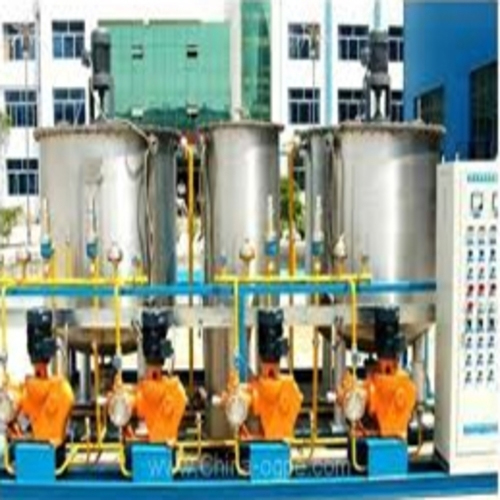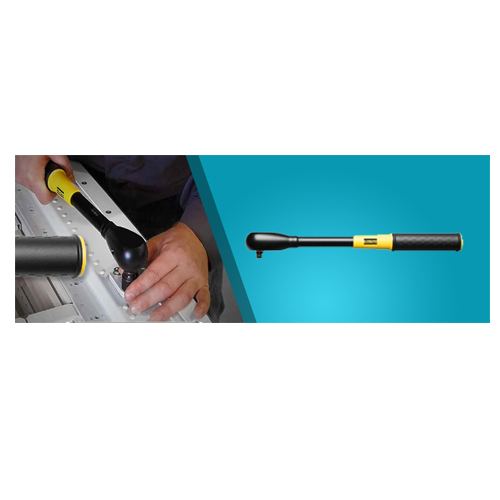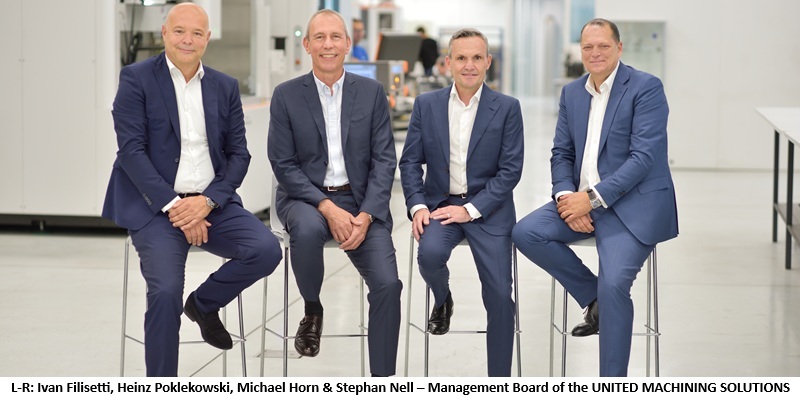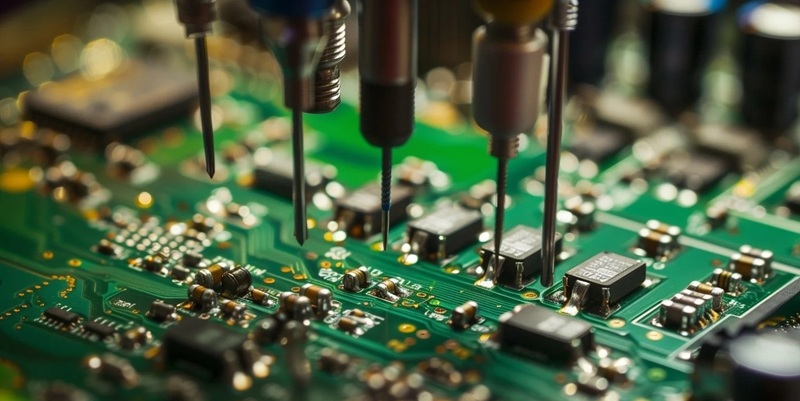Schedule a Call Back
Vanadium Redox Batteries: Power Storage Systems for Tomorrow
 Technical Articles
Technical Articles- Dec 27,10
Introduction
The present day batteries have been able to offer solutions in the form of backup power or portable power to ensure continuity of operations but these have not gone up to a level where the batteries or bank of batteries can be considered as a power house for long time operation of systems.
Vanadium Redox Battery (VRB) is the solution to this gap where there is a possibility of supplying power of the level of megawatts for a considerable duration of up to hours and days. Beyond this, there are other advantages of instant recharge from a variety of sources and low idle discharge, etc., which makes this as the real solution of stored electrical energy to cater to any power system requirements. Vanadium redox batteries can be used for a wide variety of applications like green energy storage, backup power, electric vehicles and utility load leveling/peak shaving. It can also be used to supply capacitive VARS power on a continuous basis either when charging or discharging. 
The use of vanadium redox couples in flow batteries was first suggested by NASA researchers in 1978 but first successful demonstration and commercial development was at University of New South Wales in Australia in 1986.
Operation
VRBs are based on vanadium-based redox regenerative fuel cell that converts chemical energy into electrical energy. Redox is the term used to describe electrochemical reactions in which energy is stored in two solutions with electrochemical potentials sufficiently separated from each other to provide an electromotive force to drive the oxidation-reduction reactions.
The VRB (and redox flow) is a type of rechargeable flow battery that employs vanadium redox couples in both half-cells, thereby eliminating the problem of cross contamination by diffusion of ions across a proton exchange membrane which separates the two half cells. The electrolyte in vanadium reflux batteries is known as an "Aqueous Solution of Sulphates of Vanadium". Both electrolytes are vanadium based, the electrolyte in the positive half-cells contains VO2+ and VO2+ ions, the electrolyte in the negative half-cells, V3+and V2+ ions. The electrolytes may be prepared by any of several processes, including electrolytically dissolving vanadium pentoxide (V2O5) in sulfuric acid (H2SO4); one form of electrolyte is electrochemically oxidised and the other is electrochemically reduced.
The solution remains strongly acidic in use. Hence, the energy is stored chemically in different ionic forms of vanadium in a dilute sulfuric acid electrolyte. This creates a current that is collected by electrodes and made available to an external circuit. The reaction is reversible allowing the battery to be charged, discharged and recharged. When the vanadium battery is charged, the VO2+ ions in the positive half-cell are converted to VO2+ ions when electrons are removed from the positive terminal of the battery. Similarly in the negative half-cell, electrons are introduced converting the V3+ ions into V2+. During discharge, this process is reversed and results in a typical open-circuit voltage of 1.41V at 25?C.
The vanadium flow batteries are highly scalable as both half-cells are additionally connected to storage tanks and pumps so that very large volumes of the electrolytes can be circulated through the cell. However, this circulation of liquid electrolytes is somewhat cumbersome and does restrict the use of vanadium flow batteries in mobile applications, effectively confining them to large fixed installations. But nevertheless, one company has focused on electric vehicle applications, using rapid replacement of electrolyte to refuel the battery. 
The balance of components required for the installation of a VRB consists of PVC pipes for connection between the electrolyte storage tanks and the Cells Stacks, and pumps to circulate the electrolyte through the system. Where required, heat exchangers to maintain the operating temperature of the electrolyte are included. In cold climates, the heat exchangers are not required.
Energy Density and Other Performance Parameters
Vanadium redox batteries as per the current state of technology achieve an energy density of about 25 Wh/kg of electrolyte. More recent research indicates that the use of precipitation inhibitors can increase the density to about 35 Wh/kg, with even higher densities made possible by controlling the electrolyte temperature. This energy density is quite low as compared to other rechargeable battery types, (e.g., lead-acid, 30-40 Wh/kg; and lithium ion, 80-200 Wh/kg).
Generation 2 vanadium redox batteries (vanadium/polyhalide) may approximately double the energy density and increase the temperature range in which the batteries can operate. Some researchers claim to have built a prototype for a cell which is capable of energy densities of four or fivefold of the existing level reaching equivalent to approximately that of lithium-ion batteries.
Performance Parameters
Specific energy 10-20 Wh/kg (36-72 J/g) Energy density 15-25 Wh/L (54-65 kJ/L) Charge/discharge efficiency 75-80%[1] Time durability 10-20 years Cycle durability >10,000 cycles Nominal cell voltage 1.15-1.55 V
Advantages
- The main advantage of the vanadium redox battery is that it can offer almost unlimited capacity simply by using larger and larger storage tanks attached to the half cells of the battery
- The vanadium flow batteries have a very fast response to changing loads and also have their extremely large overload capacities. They can achieve a response time of under half a millisecond for a 100% load change, and allowed overloads of as much as 400% for 10 seconds. The response time is mostly limited by the electrical equipment
- High round trip efficiency of around 65-75% in practical applications
- It can be left completely discharged for long periods with no ill effects
- The re-charging process is very simple and fast. It can be recharged simply by replacing the electrolyte if no power source is available to charge it
- If the electrolytes are accidentally mixed, the battery suffers no permanent damage
- The durability and wide design options of vanadium batteries promise large markets for many applications, such as load leveling, storage in renewable energy systems, (e.g., wind and solar) and uninterruptible power supplies
- The VRB has an availability of greater than 98%. It is designed for unattended operation with very low maintenance costs
- No degradation from repeated deep charges and discharges. The system can be discharged and charged greater than 13,000 times (20% to 80% SOC) without deterioration in system efficiencies
- System round-trip efficiencies between 70-78%
- The VRB-ESS has a charge/discharge window of 1:1 - allowing off-peak charging for on-peak dispatch - a fraction of the time required by other battery systems and ideal for wind generation applications
- Indefinite life of electrolyte (no disposal or contamination issues), and
- Once charged, the electrolyte remains fully charged with low self-discharge.
Environmental Advantage
This technology is one of the only socially responsible energy storage options in existence. As a "green" technology, the VRB is characterised by the lowest ecological impact of all energy storage technologies and is different from most other conventional energy storage systems that rely on toxic substances such as lead, zinc or cadmium. The electrolyte is a solution of vanadium mixed with a dilute sulfuric acid, with about the same acidity as in a conventional lead-acid battery. Unlike lead acid systems however the VRB electrolyte has an indefinite life span and is reusable.
Disadvantages
- The main disadvantage with vanadium redox technology is the relatively poor energy density of 25 Wh/kg because other commonly used batteries even have energy density in the range of 30-80 Wh/kg and some special batteries also offer energy density upto 200 Wh/kg, and
- The battery construction is also complex compared to standard storage batteries due to which they are not being envisaged for mobile applications.
Applications
The extremely large capacities possible from vanadium redox batteries make them well suited for use in large power storage applications such as helping to average out the production of highly variable generation sources such as wind or solar power, or to help generators cope with large surges in demand. Their extremely rapid response times also make them superbly well suited for Uninterrupted or emergency power supply type of applications, where they can be used to replace lead-acid batteries and even diesel generators. Such applications can be in hospitals, telecom systems, computer servers, manufacturing processes and many more type of loads.
Sample Installations
- A 1.5 MW UPS system in a semiconductor fabrication plant in Japan
- A 275 kW output balancer in use on a wind power project in the Tomari Wind Hills of Hokkaido
- A 200 kW, 800 kW?h (2.9 GJ) output leveler in use at the Huxley Hill Wind Farm on King Island, Tasmania
- A 250 kW, 2 MW?h (7.2 GJ) load leveler in use at Castle Valley, Utah
- A 12 MW?h (43 GJ) flow battery is also to be installed at the Sorne Hill wind farm, Donegal, Ireland
- Two 5-kW units installed at Safaricom GSM site in Katangi and Njabini, Winafrique Technologies, Kenya, and
- Two 5-kW units installed in St Petersburg, FL, under the auspices of USF's Power Center for Utility Explorations.
Price Range
The price of VRB is defined in terms of value per unit of energy storage in KiloWattHour (kWH) or MegaWattHour (MWH) since this is basically a energy storage device. Functionally and commercially, the VRB is different from an UPS system or a power generating system. As per normal law of diminishing marginal price, the per unit price of larger VRB systems is significantly lower than smaller systems. Broadly, the overall system price is around $350 to $600 per kWh for sizes ranging from a few hundred kWs to MW size systems. But larger systems rated at 100 MWh would have an installed cost of about $325 per kWh. The incremental cost of storage for large systems is approximately $150 per kWh.
Manufacturers
The VRB is ready to take off for large scale commercial production by many reputed companies in the world. With bulk manufacture and further developments, VRB shall soon be cost effective solution for many applications. Some of the major companies involved in VRB manufacture are:
V-Fuel Pty Ltd, Australia: The company manufactures Vanadium Battery cell modules ranging from 5-50 kW power output. It has the Hi-Tech ability to commercialise the Vanadium Redox Battery (VRB) and also an exclusive worldwide license for the latest technology, the new Generation 2 VBr Battery.
The Cellennium Company Limited, Thailand: This company is the sole licensee to commercialise in Thailand a number of new inventions associated with vanadium fuel cells. These inventions are owned by Squirrel Holdings Limited and are protected by patents or by applications for patents worldwide. The new inventions provide efficient and low cost methods for electricity storage and conversion of DC and AC inputs and outputs.
Cellstrom, Austria: Cellstrom products are systems solutions to offer stable energy supply from unstable sources such as renewables or weak grids. The vanadium redox flow battery is the key component to all of their systems. It gives a general buffering action and can therefore offer peak shaving function. The FB10/100 energy store system was developed for the lower power and energy segment, up to 15 kW continuous power and 100 kWh energy store. Through combination of the energy store with renewable sources such as photovoltaics, wind and/ or a biofuel generator a defined load can be completely and reliably met.
Prudent Energy, United States/Canada/China: Prudent is an energy storage technology developer, manufacturer and systems integrator, specialising in the patented VRB Energy Storage System (VRB-ESS
Related Products

Ozone System
Omnicorp Environs & Infratech Co offers a wide range of ozone systems.

SWR ’Slipping’ Wrenches
Reliable
Trade Links offers a wide range of SWR ’slipping’ wrenches.

Gripping Systems – Rgg
Schunk Intec India Pvt Ltd offers a wide range of Gripping Systems – RGG - cleaning
device with shank interface.

















